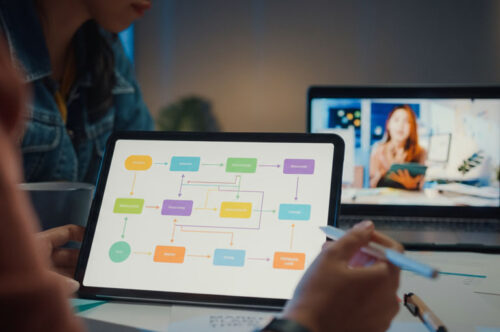Energy consumption in the workplace is quietly increasing your carbon footprint through seemingly harmless daily habits. Commercial buildings account for 40% of all energy use. Yet, many of the biggest culprits behind excessive energy consumption in the workplace are surprisingly simple mistakes. While you might pride yourself on switching off your computer at night, there are likely several energy-wasting oversights happening right under your nose.
Your lighting habits are more wasteful than you think
That quick trip to the kitchen or meeting room might seem harmless, but the lighting choices you make throughout the day add up significantly. Most people follow patterns that seem logical but actually waste substantial energy. The solution involves rethinking not just when you use lights, but how you think about shared spaces and the type of lighting in your workspace.
You’re fighting your building’s temperature system
If you’ve ever opened a window whilst the heating is on, or cranked up the air conditioning whilst sitting in direct sunlight, you’re inadvertently creating one of the biggest energy drains. The optimal temperature range for both comfort and efficiency is narrower than most people realise and it’s important to work with your building’s systems rather than against them.
Your devices are secretly energy vampires
Even when you think your electronics are “off,” many are still consuming power. Your approach to managing laptops, monitors and other workplace technology likely includes several efficiency-killing habits. From screensavers that actually waste energy to power settings that seem helpful but aren’t, device management is far more nuanced than simply hitting the off switch.
Your workspace setup is working against you
The way you arrange your desk, position your monitor and organise your immediate work area has a direct impact on energy consumption that most people never consider. Small adjustments to your physical workspace can dramatically reduce the energy needed for lighting, heating and cooling without affecting your productivity.
Your commute choices create ripple effects
Beyond the obvious carbon impact of your daily journey, your commuting decisions influence workplace energy consumption in ways that extend far beyond transport emissions. The timing, frequency and method of your commute affects everything from building energy loads to your own workspace energy needs.
Even the decision of whether to work from home or travel to the office creates complex energy implications that most people don’t fully understand. The environmental mathematics of hybrid working involves far more variables than simply avoiding the commute, yet this remains one of the most impactful choices employees can make.
Energy consumption in the workplace: the bigger picture
Recognising these hidden energy consumption in the workplace drains is the first step, but understanding why they happen requires a deeper dive into workplace energy dynamics. Small changes can create significant impacts when implemented with proper knowledge of how building systems, human behaviour and energy efficiency intersect.
The most effective solutions often involve counterintuitive approaches that challenge conventional thinking about energy consumption in the workplace. Success comes from understanding the interconnected nature of workplace energy use rather than focusing on isolated actions.
For those ready to transform their workplace energy habits, our comprehensive Sustainability in the Workplace eLearning courses addresses each area with practical, implementable strategies that deliver measurable results. Modules are:








